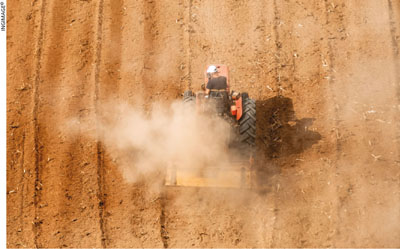AGRICULTURE SECTOR

INNOVATING FOR SECURITY
Akila Wijerathna highlights the value of building agricultural resilience

Agriculture value chains in most nations have been adversely affected by the COVID-19 crisis and the resultant lockdowns. The sector is the central pillar of most economies, generating employment so that economic circulation continues. Agriculture serves the food consumption needs of countries.
The agricultural system includes producers, raw materials, machinery and inputs, processing plants, and farm and industrialised food. Meanwhile, consumption encompasses people and numerous marketing systems.
However, because agricultural exports principally relate to food, the main impact on global markets is likely to be lower prices rather than a substantial reduction in consumption. This is because food is an essential commodity even during a crisis.
The food supply chain is a complex web that involves producers, consumers, agricultural and fishery inputs, processing and storage, transportation and marketing, and so on.
At the onset of the crisis, food supply chains were strained as many countries imposed restrictions on the movement of goods and people, across and within borders. Both supply and demand were affected – although there was a greater effect on the latter during the first wave of the pandemic due to panic buying in the light of the possibility of restrictions impacting accessibility.
As a result, the challenge was not the availability of food but accessibility. Early significant impacts included supply chain disruptions, mismatches between supplies of some goods and demand caused by school and restaurant closures, transportation problems and farm labour shortages.
However, reductions in food production may have serious implications on availability. If planting is reduced, so are harvests, which means farming families – who are often among the most acutely food insecure – as well as their communities will not have access to sufficient nutritious food down the line.
And anxiety over uncertainties linked to supply led some countries to restrict food exports, making the situation even more challenging.
Although reductions in the production of high value commodities (such as fruits and vegetables) are likely, they’re not noticeable as yet because of the lockdowns and disrup-tions to the value chain.
Suffering from hunger or chronic undernourishment means people are unable to meet their food requirements over a prolonged period. This has long-term implications for their future and continues to present a setback to global efforts to achieve zero hunger.
When people experience crisis level acute food insecurity, they have limited access to food in the short term due to sporadic and sudden crises, which may put their lives and livelihoods at risk.
However, if those facing such insecurity receive the assistance they need, they won’t join the ranks of the hungry and their situation will not become chronic.
Some producers lost access to traditional marketing channels and consumers could not find the products they needed periodically.
These challenges led to unusual situations where retail prices increased but payments to producers declined (or worse), and they could not identify channels to sell livestock or produce. In some areas, these problems forced producers to destroy or dispose of products.
The closure of restaurants and street food outlets removes an important market for many producers and processors, which may lead to a temporary surplus or trigger upstream production cuts. In some developing countries, urban supply and demand for fresh produce are in decline due to restrictions, and aversion by traders and consumers.
We expect vegetable production to become more local but do not anticipate changes to the movements of staple foods (e.g. rice and maize), fruits and meat, which already constitute the foods that are transferred the most globally.
An area we hope to see improve is intra-regional trade, which will result in shorter food chains, create more markets for farmers, and improve access to both inputs and outputs.
COVID-19 has changed the world, and offered everyone an opportunity to innovate and test ideas in a real life social lab. Given the spread of the virus, governments should focus on several dimensions of agricultural systems – i.e. food security, labour availability and farm system resilience – to ensure that the sector is more resilient.
This includes approaches such as establishing more agri-entrepreneurs and supporting local value addition; investing in agri-infrastructure, utilising IT to expand reach and obtain real-time data; shortening supply chains, strengthening community-based enterprises like producer groups, farmer producer companies, federations among others to utilise larger bases; and finally, creating a space for innovation, be it farm practices, IT based or related to logistics.




Leave a comment